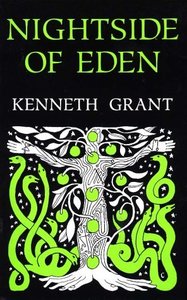
CRAFTED IN BALANCE: Ron Regé, Jr. on an alchemical ale
by Justin Farrar
Traditionally, only hardcore collector nerds—the type of basement dwellers who belong to beer-of-the-month clubs—would dare call a beer bottle a piece of art. But with the gradual emergence of craft and artisanal beers in America over the last four decades, this has changed somewhat. Indeed, some truly boss work is getting produced these days. A heavyweight in the craft-beer industry, Delaware’s Dogfish Head Brewery recently released Bitches Brew, commemorating the fortieth anniversary of the release of Miles’ fusion classic. Though I’m more of an Agharta/Pangaea kind of guy in all honesty, the bottle is stunning. The label sports a rendering of Mati Klarwein’s Afro-surrealist cover art that as deliciously intoxicating as the experimental imperial stout it’s wrapped around. At the other end of the commercial spectrum sits the Burnt Hickory Brewery, a thoroughly underground affair based in northern Georgia. Over the last year, brewer Scott Hedeen—whose beers aren’t even for sale—has produced a handful dedicated to iconic American punk and post-hardcore groups, most of them (Die Kreuzen, the Didjits, The Jesus Lizard, Killdozer) associated with Touch and Go imprint. The label art is fantastic and totally captures the vintage punk aesthetic: all scratchy, collage-like and Xeroxed-looking.
But my fave these days has to be Alchemic Ale, which Arthur first covered last June. The Houston venture, founded by Tim Leanse and Sam Rowell (who are also known for their eardrum-crushing noise-rock duo Eloe Omoe), aims to “transform beer drinking into a full-on aesthetic experience” via the merger of its twin loves for underground art and artisanal brews from Belgium. Alchemic Ale isn’t a brewery in the traditional sense of the term; Leanse and Rowell don’t brew. Rather, they curate a line of beers—each one sporting a screen-printed label designed by one of the pair’s favorite artists—that is manufactured by the Belgium-based Brouwerij Sterkens.
Alchemic Ale has released two brews to date: Yeast Hoist 15: Kept in Balance by renowned comics creator Ron Regé, Jr. and Monsters designed by comics artist and musician Mat Brinkman. The former is Sterkens’ St. Sebastiaan Golden Ale, while the latter its Bokrijks Belgian Ale. That said, the beer—which is excellent—is almost beside the point. With their shapely earthenware bottles tattooed by some of the underground’s premiere artists, Alchemic Ale utterly redefines the modern beer bottle as cultural artifact. It’s now a piece of finely crafted art.
Yeast Hoist 15: Kept in Balance in particular is a thing to behold. In addition to the label, an exquisite pattern of classic alchemical imagery aligning the Los Angeles artist’s love of esoterica with the brewing process’ ancient roots in the mystical, Regé also created a comic/zine that hangs from the bottle’s neck. One could argue that the bottle comes with the zine, not the other way around.
As you can tell, I am absolutely smitten with these bottles. Wanting to learn more about how one passes from concept to product, I recently corresponded by email with Ron Regé, Jr. who was kind enough to explain the magickal process, as well as talk about a host of other beer-related issues and topics.
Q: Technically speaking, the bottle is a part of your Yeast Hoist series of comics. Can you talk a little about that evocative title and how the bottle fits into the series’ overall aesthetic? [Check out past installments of Yeast Hoist over at the excellent What Things Do site.]
Ron Regé, Jr: “Yeast Hoist” is a name that I’ve been using for small comics I’ve been making since 1995. Each “issue” looks completely different, so this concept of having it attached to a bottle of beer fits the aesthetic perfectly. I originally got the name from a sign on a tiny door at the Bushmills distillery that I noticed while on a tour there in 1994.
Is an earthenware beer bottle the weirdest form Yeast Hoist has yet to take? What are some of the others?
Yes. The booklet itself—which is available with the bottle only—is very much like the first ten, which were xeroxed mini-comics of various shapes and sizes. A couple appeared in anthologies, with instructions to cut them out to create the booklet. The three most recent ones have been 64 page books.
Were the comics and illustrations that comprise “Yeast Hoist 15” created with the bottle concept specifically in mind?
Yes, they were. I’ve been doing a lot of work recently that makes reference to various aspects of hermetic alchemy and the “Wisdom Traditions.” I wanted to present the basic concepts of alchemy in terms as clear and simple as possible, as I knew this product would be reaching a wide and varied audience that might be unfamiliar with these concepts—and my work.
Can explain the impetus behind wanting to expose a larger audience to concepts that are traditionally considered esoteric?
These ideas have been the main inspiration for the work I have been producing over the last few years. The project is called “The Cartoon Utopia”. I have had several gallery exhibits under this name, and have produced a large amount of comic stories related to this theme. I’ve begun to see similarities between so many schools of thought: spiritual, scientific, philosophical. My work involves trying to relate some of these themes, and to help people notice these similarities. In the comic I refer to the idea of a “Unified Theory” that governs all things, and make reference to the fact that all material in the universe erupted from one initial point during The Big Bang. This idea could be referring to science or theology. At a time in history when we are constantly bombarded with polarized opinions regarding such matters, I hope that people who come across the comic might see these connections.
The comics medium seems tailor made for tackling questions of science and mysticism. All three value text and imagery equally.
Letters are basically highly stylized cartoon characters. Written language is comics. Any sequence of marks is essentially comics. Did the invention of markmaking change human culture from a matriarchy to patriarchy? Perhaps—which is why I intend to use its power to unite our opposing aspects. I try to remain conscious of markmaking’s vital role in human evolution, in both the scientific and occult sense. Writing, as opposed to language, does seem to separate us from all other life on earth. It is our curse, as well as our salvation.
Alchemical imagery and themes have long played a strong role in your artwork. Do you harbor any high-falutin’ ideas about how fine brewing can be considered a kind of alchemy?
The traditions of the alchemists helped form the basis of all of the physical sciences, so I’m sure a lot of ancient brewing practices share those same traditions.
Apparently, the brewing process does follow alchemy back to ancient Egypt. Osiris is said to have taught Egyptians how to brew and ferment.
The idea of plant matter altering human consciousness through the process of fermentation is in line with the concepts of putrefaction and rebirth that are vital to the alchemical process.
Switching to the actual consumption of beer: in terms of pairing, what would be the perfect album to listen to while cracking open Yeast Hoist?
For some reason this feels hard to answer, but I’m going with Capt. Beefheart’s Ice Cream for Crow.
Have you ever done any home-brewing?
No, although I love that book Wild Fermentation and have always wanted to. I have quite a few friends who have tried it. Am I just lazy or maybe preoccupied with other things? I started making my own kombucha this month. Does that count?
Kombucha counts. But now you can brew beer in the name of good health as well. Did you see that recent article in Wired Science about how scientists believe ancient Nubians not only produced and consumed antibiotics, but consumed them via beer. Mind blowing.
It makes sense that the history of medicine is intertwined with the traditions of brewing alcohol. They share the same roots.



































